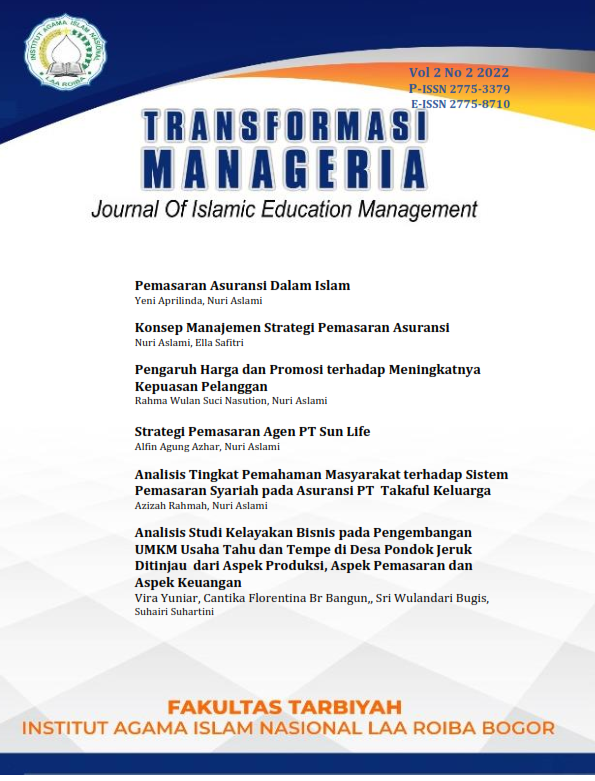Analisis Studi Kelayakan Bisnis pada Pengembangan UMKM Usaha Tahu dan Tempe di Desa Pondok Jeruk Ditinjau dari Aspek Produksi, Aspek Pemasaran dan Aspek Keuangan
Main Article Content
Abstract
This study aims to determine the exact nature of the business and tempeh in Ponsok Jeruk Village, whether it is correct or not. Analysis of aspects of the use of analysis of non-financial aspects of production and marketing aspects. While the analytical tools used for the financial aspect use Payback Period (PP), Net Present Value (NPV), Internal Rate of Return (IRR), and Profitability Index (PI), to determine whether a business is feasible or not. The results showed that the tofu and tempeh business in Pondok Jerik village from the production aspect was feasible, because the business location was strategic and easily accessible to consumers, the technology used was modern, the production process was easy. The aspect of proper marketing, with high quality products, because of imported raw materials, affordable prices, so that all circles of society can ensure, wide enough distribution, and promotions that the owner is enough to give consumers aware of the products they sell. And the results of the analysis from the financial aspect show that the Tofu and Tempe business is feasible to run with a project age of 10 years at a discount rate of 10%. Analysis) Criteria produce Payback Period (PP for 8 months 7 weeks, Net Present Value (NPV) is Rp.137,689,134, Profability Index (PI) is 1.14% and Internal Rate of Return (IRR) is 32%.
Keywords: Business Feasibility Study. Production Aspect; Marketing Aspect; Financial aspect.

